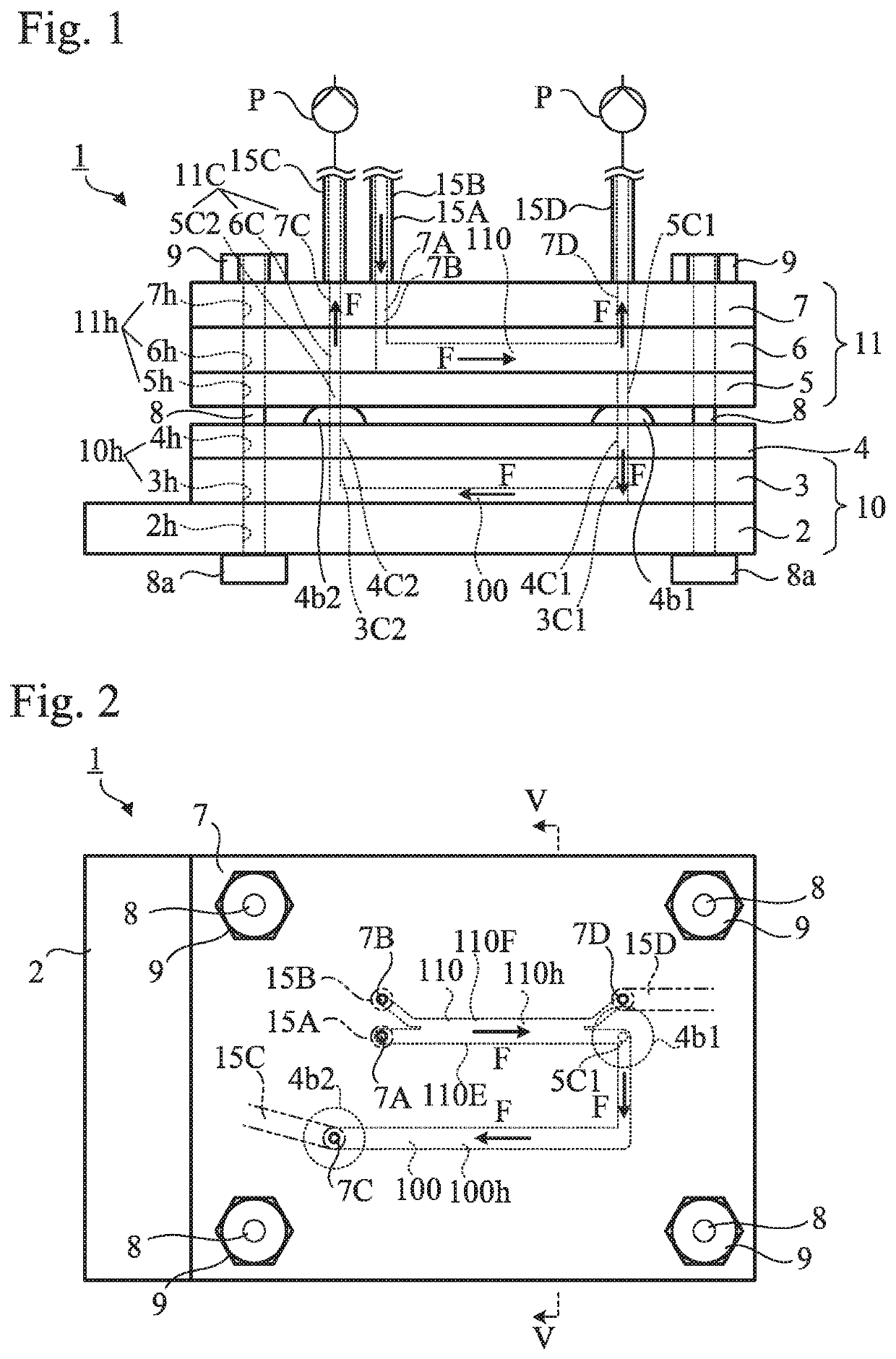Cell capture apparatus
a cell capture and apparatus technology, applied in the field of cell capture apparatuses, can solve the problems of adversely affecting analysis, difficult dielectrophoresis of ctcs in blood, and regard to the capture of other types of large cells having a larger size, so as to achieve isolation and reduce contamination
- Summary
- Abstract
- Description
- Claims
- Application Information
AI Technical Summary
Benefits of technology
Problems solved by technology
Method used
Image
Examples
Embodiment Construction
[0044]Hereinafter, with reference to the accompanying drawings, an embodiment according to the present invention will be described. It is noted that the drawings do not necessarily accurately show relative dimensional ratios of elements in order that certain features of elements may be exaggerated.
[0045]As shown in FIGS. 1 and 3, the cell capture apparatus 1 according to the embodiment includes a laminated structure including multiple plates stacked one on top of another, more specifically, a cell-capture lower flat plate 2, a cell-capture flow passage plate 3, a connection flat plate 4, a cell-separation lower flat plate 5, a cell-separation flow passage plate 6, and a cell-separation upper flat plate 7.
[0046]At four corners of the cell-capture lower flat plate 2, fixing through-holes 2h are formed. At four corners of the cell-capture flow passage plate 3, fixing through-holes 3h are formed. At four corners of the connection flat plate 4, fixing through-holes 4h are formed. At four...
PUM
 Login to View More
Login to View More Abstract
Description
Claims
Application Information
 Login to View More
Login to View More - Generate Ideas
- Intellectual Property
- Life Sciences
- Materials
- Tech Scout
- Unparalleled Data Quality
- Higher Quality Content
- 60% Fewer Hallucinations
Browse by: Latest US Patents, China's latest patents, Technical Efficacy Thesaurus, Application Domain, Technology Topic, Popular Technical Reports.
© 2025 PatSnap. All rights reserved.Legal|Privacy policy|Modern Slavery Act Transparency Statement|Sitemap|About US| Contact US: help@patsnap.com



